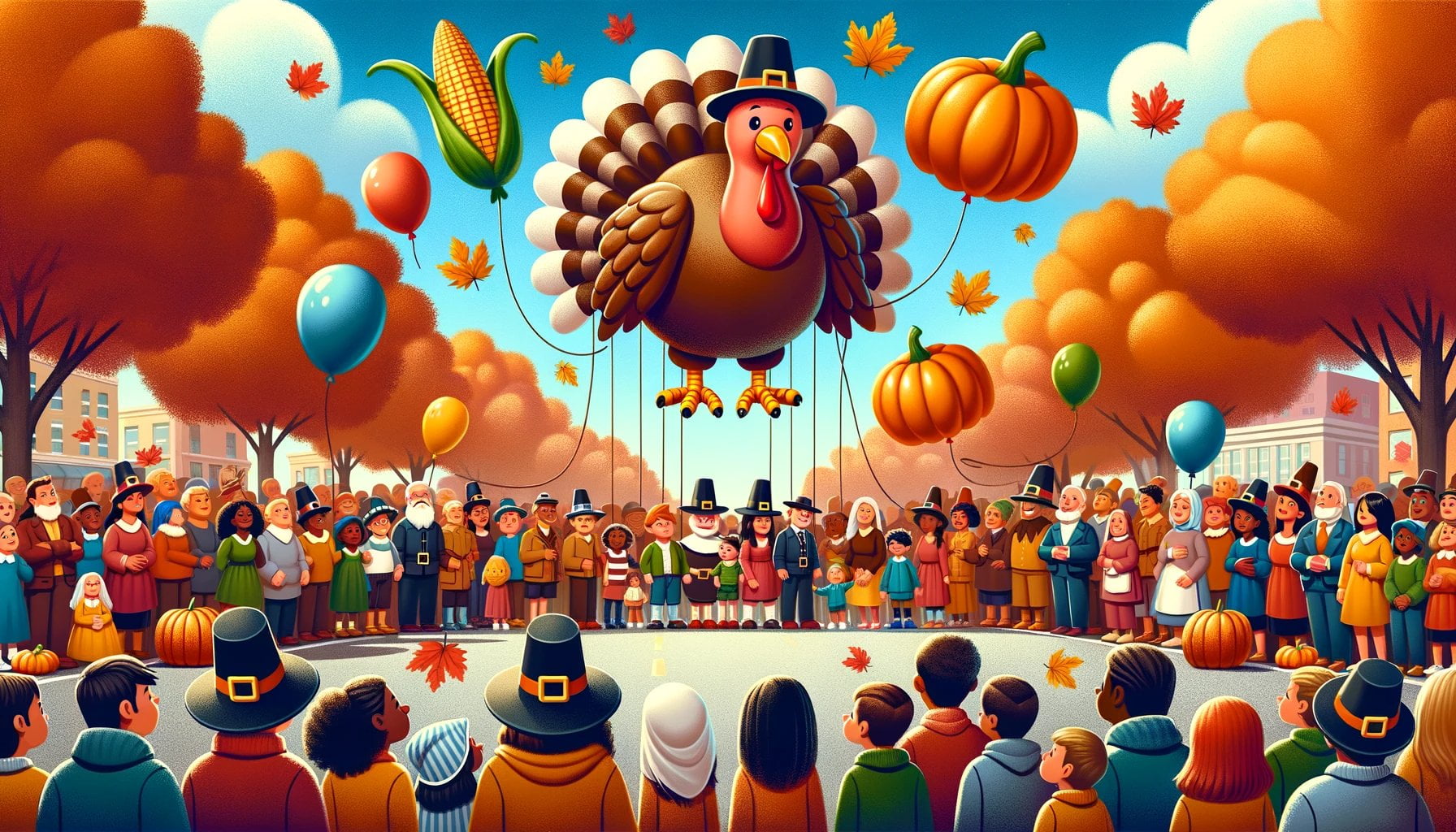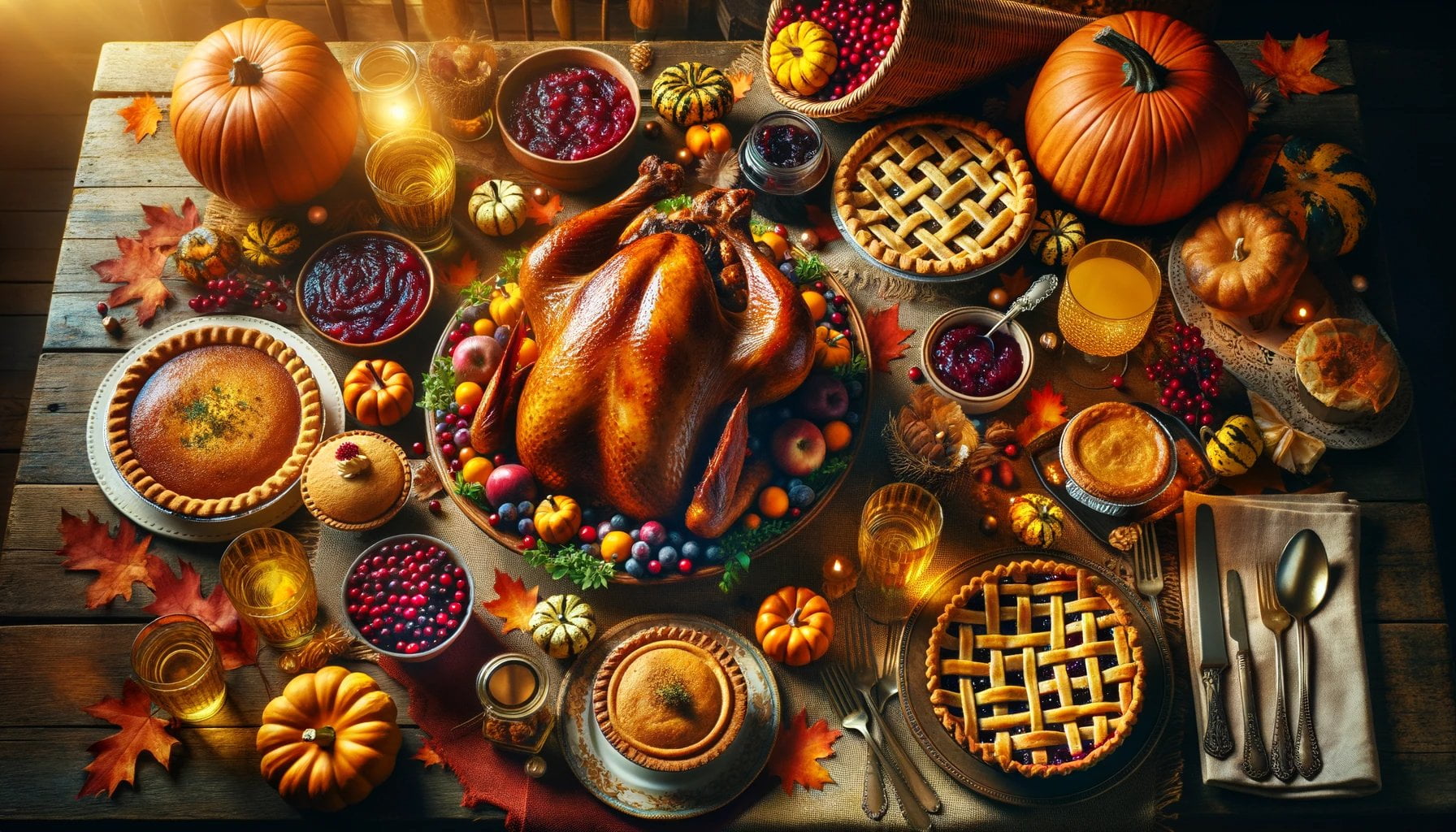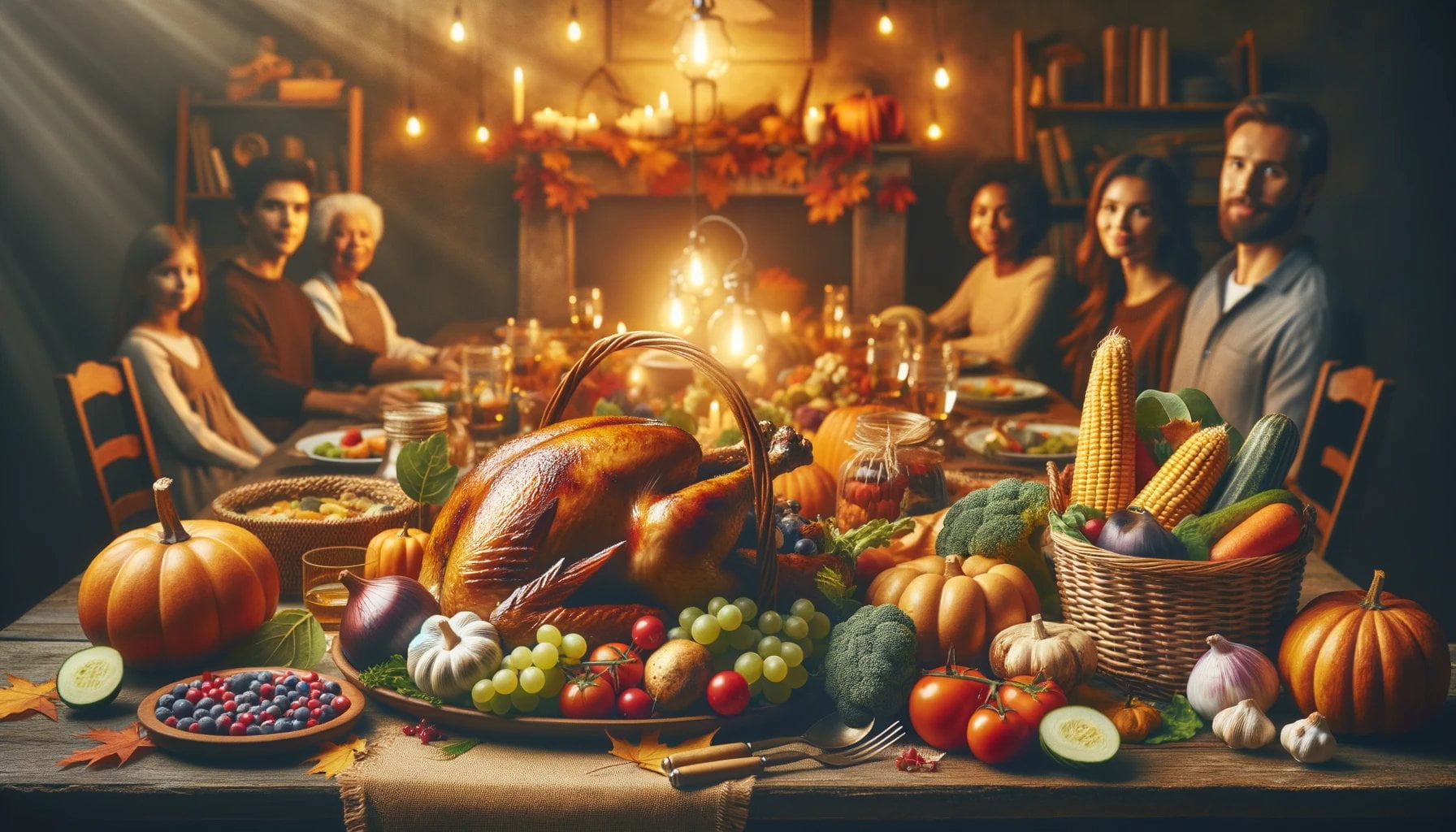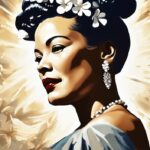Thanksgiving, a cherished holiday steeped in tradition and gratitude, holds within its essence a captivating history that often goes unnoticed. While many are familiar with the tale of the Pilgrims and Native Americans coming together for a bountiful feast, there is far more to this holiday’s origins than meets the eye. With a penchant for unearthing fascinating details, we delve into the depths of Thanksgiving’s past to uncover a surprising and delightful fun fact that will leave you feeling enlightened and eager for more. Join us on this journey as we shed light on the lesser-known origins of this beloved holiday.
Key Takeaways:
- The first Thanksgiving occurred in 1621 and was celebrated by 50 Pilgrims and 90 Wampanoag Indians over a three-day harvest festival.
- The menu at the first Thanksgiving did not include turkey, but featured foods such as venison, corn, and pumpkin.
- Every Thanksgiving, the current U.S. president pardons a turkey from being eaten.
- Macy’s has organized a parade every Thanksgiving since 1924, showcasing giant balloons, floats, and performers.
- Thanksgiving is the busiest travel day of the year, with millions of Americans traveling to visit their families.
- The traditional foods eaten for Thanksgiving dinner have remained relatively unchanged since 1621, with the addition of items like cranberry sauce and sweet potatoes.
- Over 280 million turkeys are consumed in America on Thanksgiving, which is approximately 46 million more than on Christmas.
Fun Fact About Thanksgiving: Unveiling a Fascinating Detail

Thanksgiving, a beloved holiday cherished by millions of Americans, has long been associated with mouthwatering feasts, family gatherings, and expressions of gratitude. However, nestled within this cherished holiday lies a hidden treasure—a captivating fun fact about its origins that is sure to pique your interest.
The First Thanksgiving: A Heartwarming Encounter
Imagine stepping back in time to 1621, to a small settlement called Plymouth in Massachusetts. Picture a scene filled with jubilant Pilgrims and Wampanoag Indians, coming together to celebrate a bountiful harvest. This historic event, known as the first Thanksgiving, formed the foundation of a cherished tradition that has endured for centuries (source: holidappy.com).
A Menu to Remember
Now, let’s dig deeper into this fun fact. When you think of Thanksgiving, a succulent turkey probably comes to mind. However, hold onto your carving knife because here’s something surprising: turkey did not grace the table at the first Thanksgiving feast. Instead, the Pilgrims and Native Americans enjoyed other delectable dishes such as venison, freshly harvested corn, and pumpkin. Although the culinary delights may have shifted over time, it’s fascinating to discover that some of the foundational foods remain part of our modern-day Thanksgiving traditions
A Presidential Pardon for a Feathered Friend
Amid the festivities, a truly heartwarming tradition has taken root over the years. As you sit down to savor your Thanksgiving meal, take a moment to appreciate the astonishing fact that the current U.S. president ceremoniously pardons a lucky turkey from becoming the centerpiece of someone’s dinner table. This cherished event showcases compassion and adds a touch of whimsy to the holiday season
A Spectacle of Joy and Wonder
Picture this: It’s Thanksgiving morning, and the streets of New York City resonate with excitement. Families eagerly line the streets, brimming with anticipation, as Macy’s puts on a magnificent parade that has thrilled generations since 1924. Giant balloons, dazzling floats, and enchanting performers transform the city into a magical wonderland, enchanting young and old alike. It’s a captivating experience that adds an extra dash of holiday spirit to Thanksgiving
The Grandest of Journeys
Thanksgiving isn’t just about satisfying our taste buds and basking in the warmth of family. It’s also a time when millions of Americans embark on a pilgrimage to reunite with loved ones. As departing planes take to the skies and cars fill the highways, a collective migration of gratitude unfolds. Thanksgiving proudly holds the title of the busiest travel day of the year, underscoring the significance of togetherness in our lives
A Feast Spanning Centuries
Throughout history, our Thanksgiving feast has remained remarkably consistent. While slight tweaks and additions have emerged over the years—think cranberry sauce and sweet potatoes—the essence of the meal has changed little since that first celebratory gathering in 1621. It’s a beautiful testament to the enduring power of tradition and the preservation of cherished flavors
A Turkey Extravaganza
Finally, let’s talk turkey—literally! Did you know that Americans consume over 280 million turkeys every Thanksgiving? That staggering number exceeds the amount enjoyed on Christmas by a whopping 46 million. It’s a testament to our love affair with this delectable bird and a reminder of the immense scale of this cherished holiday
In conclusion, as you gather around the Thanksgiving table this year, take a moment to savor the extraordinary origins and delightful traditions of this beloved holiday. From the heartwarming unity of the first Thanksgiving to the tantalizing array of dishes that grace our feast, Thanksgiving’s remarkable history beckons us to appreciate the richness of our cultural heritage. So, as you relish each delectable bite, remember the fascinating fun facts that make this holiday truly special.
Here are some interesting facts for you to explore:
- Fun fact about November: Did you know that November was named after the Latin word “novem,” which means nine? However, it became the eleventh month when January and February were added to the calendar.
- Fact about Halloween: Have you ever wondered why we carve pumpkins on Halloween? Discover the origins and significance of this spooky tradition.
Don’t miss out on these intriguing facts – click on the links to learn more!
The Surprising Food at the First Thanksgiving
The first Thanksgiving holds a special place in American history. It was a time when Pilgrims and Native Americans came together to celebrate a bountiful harvest. While we may associate Thanksgiving with turkey, stuffing, and cranberry sauce, the menu at the first Thanksgiving feast was quite different. Let’s uncover the surprising food that graced their tables and learn more about the origins of this beloved holiday.
The exact bill of fare of the first Thanksgiving is not recorded, but historians believe that the Pilgrims feasted on the harvest they had reaped with the help of their Native American neighbors. Governor William Bradford even sent four men on a “fowling” mission to prepare for the three-day event, suggesting that they likely hunted for wild birds.
Seafood, particularly mussels, was abundant in New England, and it is believed to have been a significant part of the Thanksgiving meal. The Pilgrims and the Wampanoag tribe likely gathered and enjoyed pumpkins and other squashes indigenous to New England as well.
One surprising fact is that potatoes did not have a place at the first Thanksgiving. Potatoes were not introduced in Europe until later, so they weren’t part of the Pilgrims’ diet at the time.
Fast forward to more recent history, and we see the emergence of some popular Thanksgiving dishes. For example, green bean casserole, a staple at many Thanksgiving dinners, was actually invented by a Campbell Soup employee. It has become a beloved addition to the traditional feast.
Cranberry sauce, often served upside down from the can, has become a classic accompaniment to turkey. And while we may think of mashed potatoes as a versatile side dish, did you know that some festivals even feature mashed potato wrestling? Talk about an unconventional use for this tasty spud!
Another surprising fact is that the sweet potatoes often associated with Thanksgiving are not actually potatoes at all. They belong to a different root vegetable family altogether.
But perhaps one of the most intriguing Thanksgiving food facts is that the pumpkin pie commonly enjoyed during the holiday may not actually contain pumpkin. Instead, it is often made using a variety of squashes, including butternut or Hubbard squash.
Key Takeaways:
– The Pilgrims and Native Americans likely enjoyed a bountiful harvest feast at the first Thanksgiving, with wild birds, seafood, pumpkins, and squashes being significant parts of their meal.
– Potatoes were not on the menu at the first Thanksgiving, being introduced to Europe later.
– Green bean casserole, cranberry sauce, and sweet potatoes have become popular additions to the traditional Thanksgiving dinner.
– Pumpkin pie may not actually contain pumpkin, often utilizing other squashes in its preparation.
Sources:
– History.com
– Mental Floss
The Evolution of Thanksgiving Celebrations
Let’s uncover a fascinating fun fact about the origins of Thanksgiving. Did you know that Thanksgiving celebrations have evolved significantly over time? From its humble beginnings to the beloved holiday we know today, the evolution of Thanksgiving is a captivating story worth exploring.
The Origins of Thanksgiving
The popular tradition of Thanksgiving traces back to a specific event that took place in 1621. The surviving colonists of the Plymouth Plantation in Massachusetts, commonly known as Pilgrims, gathered to celebrate a bountiful harvest with their Wampanoag neighbors. This gathering is widely regarded as the first Thanksgiving in North America. However, contrary to popular belief, the menu at the first Thanksgiving feast did not include turkey. Instead, it consisted of dishes such as venison, freshly harvested corn, and pumpkin.
The Presidential Turkey Pardon
One unique aspect of Thanksgiving celebrations is the Presidential Turkey Pardon. This heartwarming tradition dates back to 1947 and is known as “The National Thanksgiving Turkey Presentation.” A few days before Thanksgiving, at The White House, the current President of the United States is presented with a live turkey. In a symbolic gesture, the President “pardons” the turkey, saving it from becoming someone’s dinner centerpiece.
Macy’s Thanksgiving Day Parade
Since 1924, Macy’s Thanksgiving Day Parade has been a beloved tradition that captures the spirit of the holiday. Held in New York City, this iconic parade features giant balloons, floats, marching bands, and performances. It has become an integral part of Thanksgiving celebrations, captivating audiences of all ages.
The Busiest Travel Day of the Year
Thanksgiving weekend is not just about feasts; it is also one of the busiest travel times in the United States. Millions of Americans embark on a pilgrimage, traveling long distances to reunite with loved ones and celebrate together. This undeniable sense of togetherness is central to the holiday’s significance.
Key Takeaways:
- Thanksgiving originated from a gathering in 1621 between Pilgrims and Wampanoag neighbors to celebrate a bountiful harvest.
- The menu at the first Thanksgiving feast included venison, corn, and pumpkin, rather than turkey.
- The Presidential Turkey Pardon tradition began in 1947, with the current President “pardoning” a live turkey.
- Macy’s Thanksgiving Day Parade, held annually since 1924, delights spectators with giant balloons, floats, and performances.
- Thanksgiving weekend is the busiest travel time in the United States, with many people traveling long distances to be with family and loved ones.
Sources:
– 10 Unique and Interesting Fun Facts About Thanksgiving
– 86 Interesting Facts About Thanksgiving – The Fact File
The Impact of Thanksgiving on American Culture
Thanksgiving holds immense importance in American culture as it has a profound impact on shaping social bonds, values, and a sense of American identity. This beloved holiday brings families together and promotes gratitude, reinforcing the importance of familial reunion and appreciation for loved ones [^1^]. Thanksgiving rituals play a crucial role in achieving and affirming one’s American identity, especially for immigrants, as they are portrayed as an American rite of passage in food magazines and emphasize the value of participating in these traditions [^2^]. Additionally, Thanksgiving serves as a detailed ritual that reinforces social structures and values in American society, affirming ideas of unity, inclusivity, and cultural identity [^3^]. Moreover, it reflects a sense of interconnectedness among people and cultures, reminding individuals that they are part of a larger community and highlighting the importance of togetherness [^4^].
Though Thanksgiving may have had religious significance in the past, it has evolved into a predominantly secular celebration focused on family, gratitude, and community. Most Americans view the day as an opportunity to gather, express thanks, share meals with family, and enjoy activities such as watching football [^5^]. This shift from religious to secular celebration showcases how Thanksgiving has adapted to the changing cultural landscape of America.
Key Takeaways:
- Thanksgiving is the most important American holiday, bringing families closer together than any other occasion. It serves as a time for expressing gratitude towards loved ones and recognizing their importance in one’s life.
- Thanksgiving rituals play a significant role in achieving and affirming one’s American identity, particularly for immigrants.
- Thanksgiving reinforces social structures and values in American society, affirming ideas of cultural and social unity, identity, history, inclusion, and exclusion.
- The holiday reflects a sense of interconnectedness among people and cultures, emphasizing the importance of togetherness.
- While Thanksgiving may have had religious significance in the past, it has transformed into a mostly secular holiday focused on family, gratitude, and community.

FAQ
Q1: When and where did the first Thanksgiving take place?
A1: The first Thanksgiving took place in 1621 in North America, specifically at the Plymouth Plantation in Massachusetts.
Q2: What foods were served at the first Thanksgiving?
A2: The exact bill of fare of the first Thanksgiving is not recorded, but it is believed that the Pilgrims and the Wampanoag tribe enjoyed foods like wildfowl, corn, porridge, venison, mussels, and pumpkins.
Q3: What is the significance of pardoning a turkey on Thanksgiving?
A3: It has become a tradition for the current U.S. President to pardon a turkey from being eaten as part of the National Thanksgiving Turkey Presentation ceremony, which has been held since 1947.
Q4: How long has Macy’s been hosting the Thanksgiving Day Parade?
A4: Macy’s has been putting on the Thanksgiving Day Parade in New York City since 1924, featuring giant balloons, floats, marching bands, and performances.
Q5: What are some typical dishes served for Thanksgiving dinner?
A5: Traditional Thanksgiving dinner usually includes turkey, stuffing, mashed potatoes, cranberry sauce, and pumpkin pie. However, individual families may have their own unique traditions and additions to the meal.
- China II Review: Delicious Food & Speedy Service - April 17, 2025
- Understand Virginia’s Flag: History & Debate - April 17, 2025
- Explore Long Island’s Map: Unique Regions & Insights - April 17, 2025
















